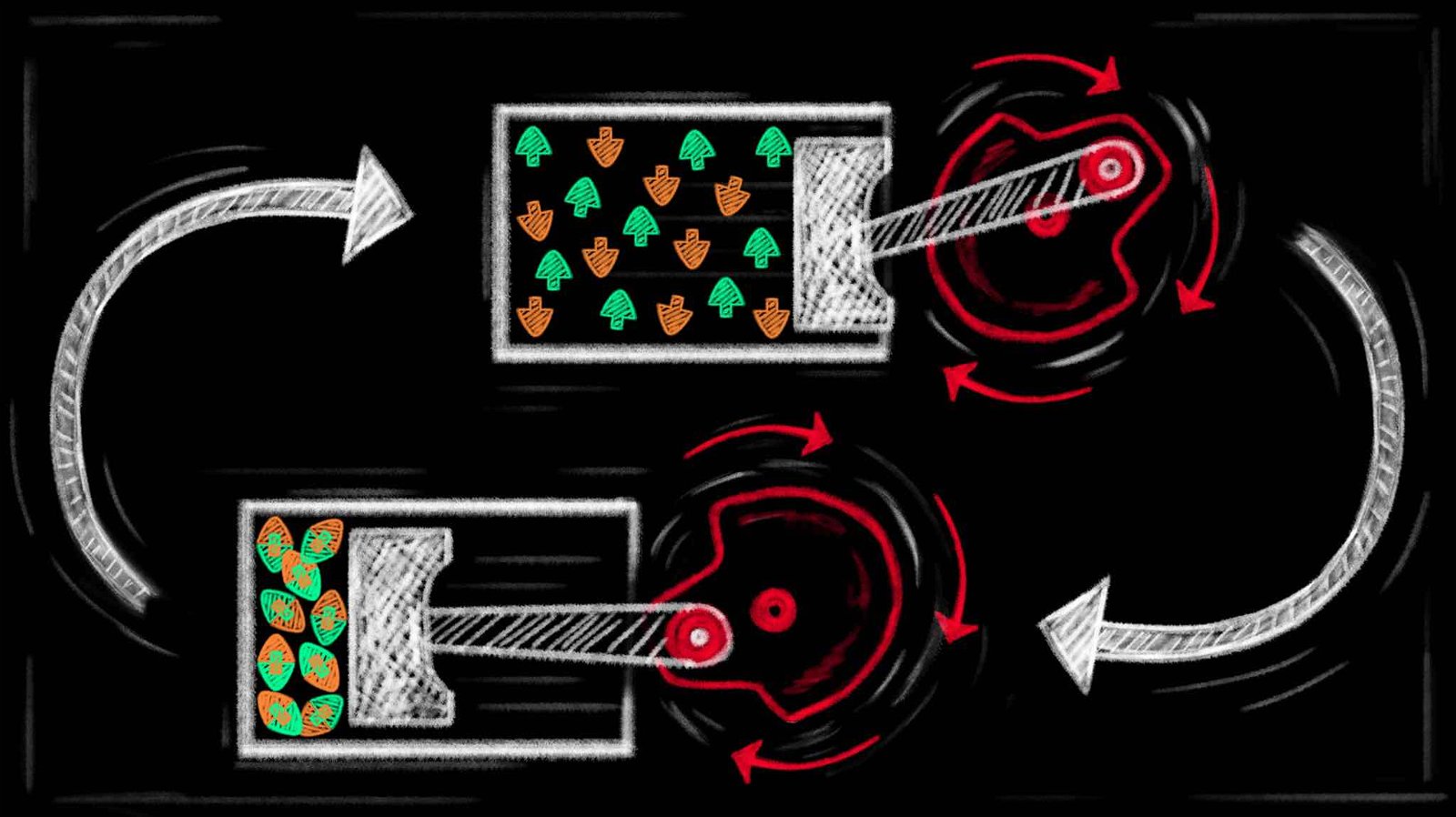A team of scientists from a trio of universities have designed and tested the science behind the world’s first-ever working quantum engine and are already working on plans to build a practical device.
Based on the energy imbalance between certain quantum realm particles, the new quantum engine could revolutionize entire industries like energy and computing that are already working on taking advantage of the seemingly magical properties of some quantum world particles.
A Quantum Engine Relies on the Same Fundamental Concept as An Internal Combustion Engine
A typical internal combustion takes advantage of the pressure generated inside a cylinder via the ignition of fuel and air. This burning mix of fuel and air pushes the pistons up and down, driving the crankshaft of the motor forward. When performed in a cycle, this system generates a steady enough force to power anything from cars, boats, and planes to lawnmowers and leafblowers.
Now, a team of scientists say they have taken the first steps toward building a whole new type of power generator they are calling a quantum engine. Although it works on the same general principle as an internal combustion engine, namely the creation of pressure, they say their design requires no heat to operate but instead takes advantage of the mysterious properties of quantum particles.
Bosons and Fermions and Quarks, Oh My
There is a wide range of quantum particles, and researchers are finding new ones all of the time. Still, whether a muon, a gluon, an up quark, or a down quark, all quantum particles fall into two main categories; fermions and bosons. The main difference between these two quantum camps is their resting energy states, especially at extremely low temperatures where the most unusual (and promising) quantum realm effects occur.
That difference caused a team of scientists from the Okinawa Institute of Science and Technology’s Quantum System Unit to wonder if it was enough to design and actually build the world’s first tiny quantum engine. After some design attempts, they settled on the idea of combining fermions together to create bosons and then breaking those bosons back up to create fermions. Ideally, this would happen cyclically, just like the action inside an internal combustion engine, resulting in a quantum engine that is driven by this cyclical reaction.


“To turn fermions into bosons, you can take two fermions and combine them into a molecule,” explained Prof. Thomas Busch, leader of the Quantum Systems Unit, in a press release announcing the revolutionary quantum engine design. “This new molecule is a boson. Breaking it up allows us to retrieve the fermions again.” If done cyclically, Busch says the reaction can power a quantum engine “without using heat.”
The main drawback is that their tiny power plant relies on extremely low temperatures to maintain its unusual quantum properties, namely, the energy difference between bosons and fermions. Still, the actual design of the quantum engine is remarkably simple. Plus, the inventors also say that their quantum engine’s efficiency “is quite high” and that their initial tests indicate it “can reach up to 25% with the present experimental setup built by the collaborators in Germany.”
Building a Working Quantum Engine
Published in the journal Nature, the research and designs from the OSIT team and the confirmation efforts by their colleagues at the University of Kaiserslautern-Landau and the University of Stuttgart are relatively straightforward. However, they also caution that there are critical steps to complete before realizing their goal of building a practical quantum engine instead of a proof of concept that operates in a lab setting.
“While these systems can be highly efficient, we have only done a proof-of-concept together with our experimental collaborators,” explained OSIT researcher Keerthy Menon. “There are still many challenges in building a useful quantum engine.”
If the researchers are ultimately successful, this type of system could completely change the energy sector, including things like energy generation, transmission, and storage, as well as the communications industry, where quantum communication projects are already being explored by industry leaders.
More broadly, it may even further the goals of a working quantum computer, a seemingly attainable goal that has thus far resisted most practical applications.
Christopher Plain is a Science Fiction and Fantasy novelist and Head Science Writer at The Debrief. Follow and connect with him on X, learn about his books at plainfiction.com, or email him directly at christopher@thedebrief.org.
